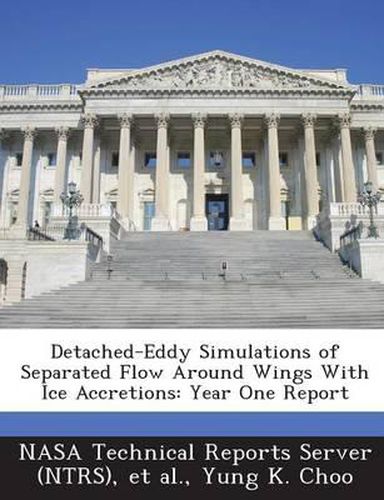Readings Newsletter
Become a Readings Member to make your shopping experience even easier.
Sign in or sign up for free!
You’re not far away from qualifying for FREE standard shipping within Australia
You’ve qualified for FREE standard shipping within Australia
The cart is loading…






A computational investigation was performed to assess the effectiveness of Detached-Eddy Simulation (DES) as a tool for predicting icing effects. The AVUS code, a public domain flow solver, was employed to compute solutions for an iced wing configuration using DES and steady Reynolds Averaged Navier-Stokes (RANS) equation methodologies. The configuration was an extruded GLC305/944-ice shape section with a rectangular planform. The model was mounted between two walls so no tip effects were considered. The numerical results were validated by comparison with experimental data for the same configuration. The time-averaged DES computations showed some improvement in lift and drag results near stall when compared to steady RANS results. However, comparisons of the flow field details did not show the level of agreement suggested by the integrated quantities. Based on our results, we believe that DES may prove useful in a limited sense to provide analysis of iced wing configurations when there is significant flow separation, e.g., near stall, where steady RANS computations are demonstrably ineffective. However, more validation is needed to determine what role DES can play as part of an overall icing effects prediction strategy. We conclude the report with an assessment of existing computational tools for application to the iced wing problem and a discussion of issues that merit further study.
$9.00 standard shipping within Australia
FREE standard shipping within Australia for orders over $100.00
Express & International shipping calculated at checkout
A computational investigation was performed to assess the effectiveness of Detached-Eddy Simulation (DES) as a tool for predicting icing effects. The AVUS code, a public domain flow solver, was employed to compute solutions for an iced wing configuration using DES and steady Reynolds Averaged Navier-Stokes (RANS) equation methodologies. The configuration was an extruded GLC305/944-ice shape section with a rectangular planform. The model was mounted between two walls so no tip effects were considered. The numerical results were validated by comparison with experimental data for the same configuration. The time-averaged DES computations showed some improvement in lift and drag results near stall when compared to steady RANS results. However, comparisons of the flow field details did not show the level of agreement suggested by the integrated quantities. Based on our results, we believe that DES may prove useful in a limited sense to provide analysis of iced wing configurations when there is significant flow separation, e.g., near stall, where steady RANS computations are demonstrably ineffective. However, more validation is needed to determine what role DES can play as part of an overall icing effects prediction strategy. We conclude the report with an assessment of existing computational tools for application to the iced wing problem and a discussion of issues that merit further study.